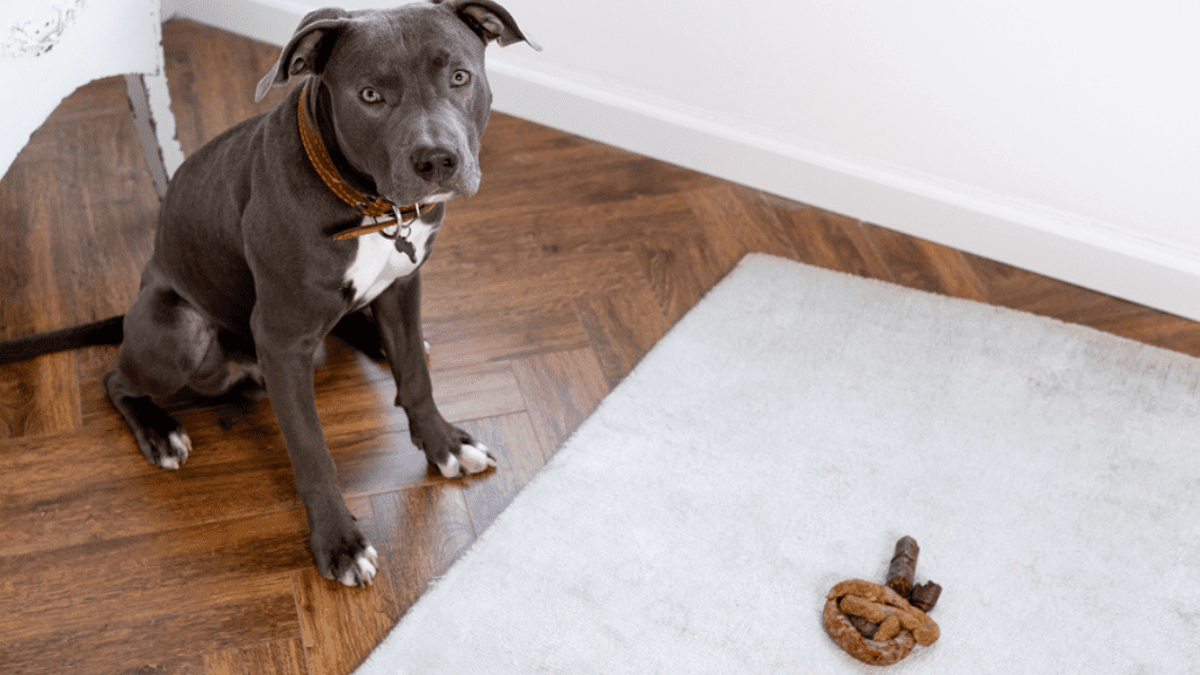For the owners of a 4-legged dog, taking note of the physiological needs of his friend is now a daily routine. The gesture of collecting feces is not only a symbol of civilization, but also serves to test the health of the dog with a quick glance.
In fact, feces are a powerful diagnostic tool for professionals: a change in color or / and consistency is a first alarm bell that tells us that Fido’s body is facing a problem.
Male yellow stools in the dog are they a serious symptom?
What should the dog’s feces be like?
It may seem trivial, but the normal stools of a healthy dog will have a compact and solid consistency (not too hard) and brown in color.
The nuance of color is not so important, which can vary according to the type of food ingested or the possible intake of foods containing dyes.
But a different color of the dog’s stool than usual can be a first indication of the problem.
Why is normal stool brown?
The brown color is due to a pigment contained in the bile, la bilirubin, which in turn derives from the oxidation of biliverdin. Bile is produced by the liver, so yellow stools in dogs can also be traced to a hepatic origin.
In the various physiological digestion processes, bilirubin is reduced to stercobilin, giving the stool its characteristic brown color, which is therefore a sign of health.
Stool color, when something is wrong
And different color of the dog’s feces can give us an idea of what the origin of the disorder is.
- I made of bright red color: presence of blood in the final tract of the intestine;
- I made of dark red color o mine (melena): presence of digested blood, since it comes from the upper intestinal tract;
- I made of White color (alcoholic stools): usually indicates the presence of excess calcium in the diet;
- Yellow dots in dog feces (or white): they can indicate the presence of intestinal worms;
- I made of green colour: due to traces of grass contained inside or due to incomplete transformation of biliverdin into bilirubin, a pigment that gives the characteristic color;
- I made of yellow color: liver, gallbladder or pancreas problems.
What causes yellow stools in dogs?
The excrements of this color are due to an incomplete process of stool formation, due to an element that has created a disturbance, such as the ingestion of an unsuitable food. But not only.
If it is some sporadic episode there is no need to be alarmed: think about what the dog ate that was different from usual and try to understand if eliminating the primary ailment will also eliminate the symptom.
However, if the yellow stool in the dog persists for some time, it will be necessary to investigate further with a veterinary consultation. In this article we will explore the causes.
Cause
Food intolerance is one of the main causes of yellow stools in dogs: this typically occurs when the dog has eaten a new food, perhaps a change of the usual kibble, or even worse, from a dry diet to a housewife.
The dog’s gut microbiota may take time to “specialize” for the digestion of that food, or it may even be unable to do so. Thus the metabolic changes are reflected in the color of the stool, making them Clearersometimes altering its consistency, which can become liquid.
In addition to an intolerance, the causes can be mainly three:
Digestive problems
If your dog suffers from intestinal disorders, it is good to investigate the exact cause of the yellow stool in the dog.
It could be a power problem, or something more. Not only the intestine, but also the pancreas, liver and gallbladder are involved in the digestive process, so evaluating the microbiological parameters could help in making a diagnosis.
Infections
Indigestions and intolerances are the most frequent, but not the only, causes of yellow stools in dogs. If this problem persists it could indicate the presence of an intestinal infection, which leads the dog to suffer from diarrhea with an abnormal color.
Visit your friend if you have this suspicion. Another possible cause could be parasites, such as common intestinal worms.
Intestinal parasites
Worms, if present, are not necessarily visible in the yellow stool in the dog, so you can ask your veterinarian to carry out a coprological examination to trace the origin of the problem.
Il yellow mucus in the dog’s stool it is a symptom that can be linked to some pathologies such as:
Food intolerance
Even with age, the dog could develop food intolerances towards his usual diet. This is reflected in a change in digestion, which can make the dog’s stool yellow and hard, or even soft in texture.
There are foods specially formulated for these needs, such as mono-protein foods. You can consult a nutrition expert to find out if this is indeed your case or if further information is needed.
In short, if for once you have found yellow feces in the dog, do not be too alarmed, but continue to monitor its general status and the progress of its feces, and if you do not notice any improvement, do not hesitate to contact your doctor!

